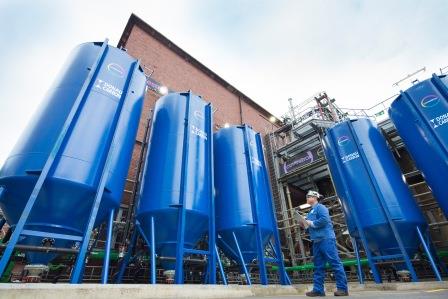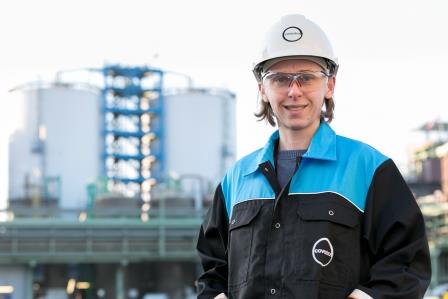Description
In many industrial processes, large amounts of waste water, containing highly diluted common table salt (5-10%) are released into rivers, becoming a burden to the ecosystem, especially in terms of drinking water production. On the other hand, salt (NaCl) is a crucial raw material for the production of chlorine, which is a key raw material for the manufacture of poly-carbonate and other high performance plastics used in many areas such as automotive, electronics, and medical technology.
In several years of research and development, basic principles of using brine from waste water streams have been worked out. Now a pilot plant has been constructed and gone into operation within Covestro’s project, Cycles (funded by German Federal Ministry of Environment (BMUB)), to demonstrate the reuse of low-concentrated salt- containing wastewater streams. The plant is operating with a throughput of 30m³/h of wastewater. After cleaning the brine, new salt is added to reach the needed concentration for chlorine production thus closing the loop from waste water to a valuable resource.
Within another, currently ongoing project, RE-Salt (funded by the German Ministry for Education and Research (BMBF)), research is being conducted for the purification of saline waste water streams by adapted adsorption and electrochemical processes. Furthermore, the concentration of the brine by means of innovative and environmentally friendly processes is key to make the waste water almost fully reusable.
Added value
Covestro is the first company in Germany to prove the economic feasibility and to implement the process at an industrial scale.
- The current reduction of 30m³/ waste water per hour allows already reducing the amount of salt used in chlor-alkali electrolysis by 20 000 tons per year.
- The amount of fully desalinated water used will be cut by approximately 220 000 tons per year. This means savings of 1000 tons per year of CO2 emissions thanks to increased resource efficiency. It is aimed to increase the flow rate up to 50m³/h. The process is implemented at the Krefeld-Uerdingen site. The plant is still in test mode because it has to be secured so that no negative long time effects occur with regard to the production of chlorine.
- After successful evaluation, the implementation will be extended to other Covestro sites worldwide. The implementation in the production of polycarbonate has an exemplary character. The same technology can be adapted to other industrial use cases thus considerably enhancing its positive impact. It is known that nowadays 60-70% of all chemically manufactured products come into contact with NaCl solutions in the course of their production process.
The further research and the expected new technology being developed in RE-Salt will make efficient concentration of NaCl-containing wastewater streams possible taking into account also energetic and economic aspects and further increasing the recycling effect.
Challenges
- Production of chlorine is a process that requires high inputs of electric power.
- Specifications of the raw material (concentrated brine) are high because even traces of polluting substances can significantly increase the needed amount of power per ton of produced chlorine as well as material costs by blocking and damaging the expensive membranes that are the key part of the production process.
- The main challenge is to purify the waste water in a way that the specification of the brine used as raw material is met and at the same time keeping the energy consumption and costs at economically and environmentally feasible levels.
Partners
German Water Center, Donau Carbon GmbH, Universität Duisburg-Essen, Dechema, Envirochemie GmbH, Technische Hochschule Köln.

